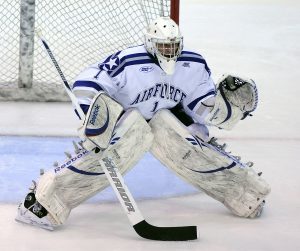
In the National Hockey League, as well as other professional hockey leagues, a typical hockey game lasts for three periods of 20 minutes each. The clock is paused during every stoppage in play, resulting in a total 60 minutes of regulation playing time.
However, if the score is tied at the end of regulation time, hockey rules dictate that overtime is used to determine which team is the winner.
What is Overtime?
Overtime is the extra time added to a tied game following the end of regulation time. In the regular season of the NHL:
- An overtime period lasts for five minutes.
- Teams play with four skaters each, as opposed to the usual five skaters on the ice during regulation time. If a team incurs penalties, however, they may have to play with even less.
The Rules of Overtime
With fewer skaters on the ice, there is more room to maneuver, resulting in a higher likelihood of a goal being scored.
The game ends immediately when a goal is scored, and the team that scores wins the game. This is called sudden death overtime.
If the score is still tied at the end of the overtime period, a shootout is used to determine the winner. In a shootout:
- Each team chooses three shooters.
- The home team chooses which team shoots first.
- The teams then alternate as shooters try to score one-on-one against the opposing goaltender.
If the score is still tied after all six shooters have made their attempts, the shootout continues with one shooter per team per round. The teams must select new shooters for each round. The first shooter to score when the opposing shooter fails wins the game for their team.
NHL Playoff Overtime Rules
In the NHL playoffs, overtime is different:
- The overtime period lasts for 20 minutes
- The teams play five-on-five.
- There is no shootout.
If the score is tied after the end of the first playoff overtime period, another 20-minute overtime period is played. This continues until a goal is scored, thus ending the game. As a result, playoff games can last much longer than normal season games.
Notable NHL Overtime Games
The longest overtime in NHL history took place in 1936 during a game between the Detroit Red Wings and the Montreal Maroons. It lasted for five complete overtime periods and nearly all of the sixth.
Mud Bruneteau of the Red Wings slid the puck past Maroons’ goaltender with only three and a half minutes left in the sixth overtime period. If they had completed that period, the teams would have played the equivalent of three consecutive games.
Perhaps the most memorable NHL overtime goal was scored on May 10, 1970, when Bobby Orr of the Boston Bruins scored against the St. Louis Blues.
As he was in the process of shooting the puck, Orr tripped over an opponent’s hockey stick and was catapulted into the air. Orr’s shot found the back of the net, he began his celebration in midair, and the Boston Bruins won the Stanley Cup.
The most famous hockey overtime goal outside of the NHL took place during the final men’s hockey game of the 2010 Winter Olympics in Vancouver.
With the gold medal on the line, Canada and the U.S. played to a 2-2 tie at the end of regulation time. At the 7:40 mark of the first overtime period, Canadian superstar Sidney Crosby scored against American goaltender Ryan Miller and claimed the gold medal for Canada.
Hockey overtime can be among the most exciting moments in sports, especially during playoff and championship games. Overtime turns players into heroes. The instant ecstasy or sudden defeat is palpable, and the story is often told for years to come.



